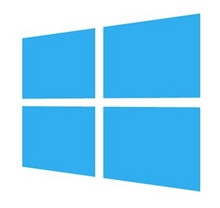Windows 8.1: The return of the Start button


Earlier this week, my ZDNet colleague Ed Bott and I went head-to-head over Microsoft's planned revamp of Windows 8. Codenamed 'Blue,' the update will be known to most users as Windows 8.1.
Bott argued that the Windows 8.1 release "is part of the new, faster update cadence Microsoft promised when it shipped Windows 8," and that with it, "Microsoft will expand the capabilities of Windows dramatically, allowing it to work with a new class of smaller, cheaper devices that are powerful and portable but are still PCs."
I took the opposing view, arguing that shoehorning tweaks and changes into an already cluttered and confused user interface doesn't seem like the way forward, and that while Windows 8.1 might go some way to helping people love Windows 8 a little more, it is highly unlikely that it will make people fall in love with the PC again.
The race was a close one, but in the end, Bott's argument won the day, collecting 58 percent of the votes. Not a landslide by any means, but it's an indication that on the whole, readers are willing to give Microsoft and Windows 8.1 the benefit of the doubt.
But is adding the Start button back to Windows, along with a few other tweaks, and switching up to a more rapid release cadence really going to be enough to reinvigorate Windows and the flagging PC industry?
I'm still far from being convinced.
First, adding back the Start button, but not hooking that up to the other vital component — the Start menu — doesn't, in my opinion, help much. If anything, all it does is throw more confusion and change at users who are already suffering a decline in productivity thanks to the changes made in Windows 8.
While many people have been calling for the return of the Start button, I don't think it was the Start button they actually wanted back, but the Start menu. Rather than a focused part of the screen devoted to applications and settings, users are now dumped, blinking and confused, into what is essentially a full-screen Start menu.
At the time Windows 8 was unveiled, many of the user interface changes seemed like changes made for the sake of change. Microsoft countered this, arguing that the changes were made based on user feedback and studies. But if that was the case, what does that say of the subsequent U-turn? If the initial change was grounded in research, what's the basis for the change back?
Windows 8 felt like it was less about choice or what users wanted, and more about top-down decision making.
Another problem I have with the user interface changes — both the initial changes and the subsequent change back — is that they give users, in particular enterprise users, a feeling of uncertainty as to what the future might bring. As a rule, big changes happen during major releases, but Microsoft's adoption of a more aggressive release schedule could mean users having to adapt to regular change.
Then there are those who like Windows 8. Where does Windows 8.1 leave them? Striking a compromise between those who love the operating system and those who hate it is going to be tricky.
Another question that bothers me about Windows 8.1 is whether it represents an actual change in Microsoft's release cycle, or just a rebranding of updates that we previously used to call service packs.
Right now I'm not sure what Windows 8.1 is. It feels like a service pack, but if that's the case, what's behind the fact that it's being branded much in the same way as a release would? Is this Microsoft's attempt to generate OS X levels of buzz for periodic releases, or is this a precursor to a subscription plan similar to the one Adobe now offers for its Creative suite of applications?
Another concern I have about Windows 8.1 is that it will lead to thrown-in heaps of upgrade fatigue from enterprise users who have been busy erasing all traces of Windows XP from their networks, and I think that it's hard to get a single message out there that will appeal to all.
And finally, to what may very well be the biggest obstacle facing Windows 8/8.1: the fact is that there was never a proven demand or market for touch-enabled Windows devices. Microsoft's philosophy seems to have been one of "if we build it, customers will come." The primary platforms that Windows 8 is being run on are desktop and notebook systems, and even if touchscreens end up on a quarter of notebooks by 2016, then touch remains very much a niche feature.
As you can now tell, I have a lot of concerns about Windows 8.1.
Windows 8.1 is coming, and with it will come a handful of UI changes that Microsoft hopes will be enough to silence the critics.
A small number of these changes — such as the way Modern apps work — will be of benefit to users, while other changes — such as bolting a part-functional Start button back onto the OS — will do little other than throw more confusion and change at users who are already suffering a decline in productivity thanks to the changes made in Windows 8.
The U-turn that Microsoft is making with Windows 8.1 in adding the Start button back will do little for either existing user, or to encourage more people to take up the platform. The way to reignite Windows is to give users what they want, not force changes on them they never asked for in the first place.